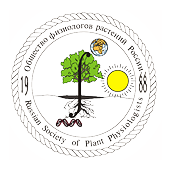Новости науки и практики // Январь 2023

Biological and Molecular Components for Genetically Engineering Biosensors in Plants
In this review, Liu et al. summarize the framework for engineering different types of GEPBs. They then highlight representative validated biological components for building plant-based biosensors, along with various applications of plant-based biosensors in basic and applied plant science research.
The origin and evolution of salicylic acid signaling and biosynthesis in plants
Salicylic acid (SA) plays a pivotal role in plant response to biotic and abiotic stress. Several core SA signaling regulators and key proteins in SA biosynthesis have been well characterized. However, much remains unknown about the origin, evolution, and early diversification of core elements in plant SA signaling and biosynthesis. In this study, Jia et al. identified 10 core protein families in SA signaling and biosynthesis across green plant lineages. They found that the key SA signaling receptors, the nonexpresser of pathogenesis-related (NPR) proteins, originated in the most recent common ancestor (MRCA) of land plants and formed divergent groups in the ancestor of seed plants. However, key transcription factors for SA signaling, TGACG motif-binding proteins (TGAs), originated in the MRCA of streptophytes, arguing for the stepwise evolution of core SA signaling in plants.
Continuous monitoring of chemical signals in plants under stress
Time is an often-neglected variable in biological research. Plants respond to biotic and abiotic stressors with a range of chemical signals, but as plants are non-equilibrium systems, single-point measurements often cannot provide sufficient temporal resolution to capture these time-dependent signals. In this article, Coatsworth et al. critically review the advances in continuous monitoring of chemical signals in living plants under stress.
https://www.nature.com/articles/s41570-022-00443-0?utm_source=substack&utm_medium=email
Бурые водоросли загоняют углекислый газ в слизь
Полисахариды, которыми покрыты бурые водоросли, запирают в себе углекислый газ прочно и надолго.
https://www.nkj.ru/news/47209/
The AFB1 auxin receptor controls the cytoplasmic auxin response pathway in Arabidopsis thaliana
The phytohormone auxin triggers root growth inhibition within seconds via a non-transcriptional pathway. Among members of the TIR1/AFBs auxin receptor family, AFB1 has a primary role in this rapid response. However, the unique features that confer this specific function have not been identified. Dubey et al. show that the N-terminal region of AFB1, including the F-box domain and residues that contribute to auxin binding, are essential and sufficient for its specific role in the rapid response.
https://www.biorxiv.org/content/10.1101/2023.01.04.522696v1?utm_source=substack&utm_medium=email
New levers for controlling plant biochemistry
Plant biochemists have discovered a new level of regulation in the biochemical 'machinery' that plants use to convert organic carbon derived from photosynthesis into a range of ring-shaped aromatic molecules. The research suggests new strategies for controlling plant biochemistry for agricultural and industrial applications.
https://www.sciencedaily.com/releases/2023/01/230111131539.htm
Organelles grow in random bursts
New experiments that show that eukaryotic cells can robustly control average fluctuations in organelle size. By demonstrating that organelle sizes obey a universal scaling relationship that scientists can predict theoretically, a new framework suggests that organelles grow in random bursts from a limiting pool of building blocks.
https://www.sciencedaily.com/releases/2023/01/230106193410.htm
Producing fast and active Rubisco in tobacco to enhance photosynthesis
Chen et al. report the engineering of a Form 1A Rubisco from the proteobacterium Halothiobacillus neapolitanus in Escherichia coli and tobacco (Nicotiana tabacum) chloroplasts without any cognate chaperones. The native tobacco gene encoding Rubisco large subunit was genetically replaced with H. neapolitanus Rubisco (HnRubisco) large and small subunit genes. We show that HnRubisco subunits can form functional L8S8 hexadecamers in tobacco chloroplasts at high efficiency, accounting for ∼40% of the wild-type tobacco Rubisco content.
The relationship between chlorophyllous spores and mycorrhizal associations in ferns: evidence from an evolutionary approach
Mellado-Mansilla et al. evaluated the coevolution of chlorophyllous spores and mycorrhizal associations in ferns and their relation to habitat type using phylogenetic comparative methods. Although they did not find support for the coevolution of spore type and mycorrhizal associations, they did find that chlorophyllous spores and the absence of mycorrhizal associations have coevolved with epiphytic and waterlogged habitats.
https://bsapubs.onlinelibrary.wiley.com/doi/10.1002/ajb2.16094?utm_source=substack&utm_medium=email
Thermal sensitivity across forest vertical profiles: patterns, mechanisms, and ecological implications
Across vertical gradients, directional trends in the biophysical environment and leaf traits are the rule, driving variation in the physiology and ecology that have these as their underpinnings. However, uncertainty remains about how temperature sensitivity of foliar gas exchange varies across these vertical gradients. Similarly, much remains unknown about how crown exposure influences the temperature sensitivity of woody stem growth.
https://nph.onlinelibrary.wiley.com/doi/10.1111/nph.18539?utm_source=substack&utm_medium=email
Multiple mechanisms behind plant bending
Jonsson et al. attempt to summarize and link different viewpoints on bending mechanisms: genes and signalling, mathematical modelling and biomechanics. They argue that quantifying cell growth and physical forces could open a new level in our understanding of bending and resolve some of its paradoxes.
https://www.nature.com/articles/s41477-022-01310-y?utm_source=substack&utm_medium=email
The nuclear effector ArPEC25 from the necrotrophic fungus Ascochyta rabiei targets the chickpea transcription factor CaβLIM1a and negatively modulates lignin biosynthesis, increasing host susceptibility
Kumar Singh et al. describe the effector protein Ascochyta rabiei PEXEL-like Effector Candidate 25 (ArPEC25), which is secreted by the necrotroph A. rabiei, the causal agent of Ascochyta blight disease in chickpea (Cicer arietinum), and is indispensable for virulence. After entering host cells, ArPEC25 localizes to the nucleus and targets the host LIM transcription factor CaβLIM1a. CaβLIM1a is a transcriptional regulator of CaPAL1, which encodes phenylalanine ammonia lyase, the regulatory, gatekeeping enzyme of the phenylpropanoid pathway. ArPEC25 inhibits the transactivation of CaβLIM1a by interfering with its DNA binding ability, resulting in negative regulation of the phenylpropanoid pathway and decreased levels of intermediates of lignin biosynthesis, thereby suppressing lignin production.
New semi-dwarfing alleles with increased coleoptile length by gene editing of gibberellin 3-oxidase 1 using CRISPR-Cas9 in barley (Hordeum vulgare L.)
The green revolution was based on genetic modification of the gibberellin (GA) hormone system with "dwarfing" gene mutations that reduces GA signals, conferring shorter stature, thus enabling plant adaptation to modern farming conditions. Strong GA-related mutants with shorter stature often have reduced coleoptile length, discounting yield gain due to their unsatisfactory seedling emergence under drought conditions. Cheng et al. present gibberellin (GA) 3-oxidase1 (GA3ox1) as an alternative semi-dwarfing gene in barley that combines an optimal reduction in plant height without restricting coleoptile and seedling growth.
https://onlinelibrary.wiley.com/doi/10.1111/pbi.13998?utm_source=substack&utm_medium=email
Новости
Новости науки и практики // Апрель 2024
Обзор научных новостей, опубликованных во всемирной паутине за последний месяцФосфорилирование плазматической мембраны H+-АТФазы Thr881 (треонин) участвует в светоиндуцированном открывании устьиц
Ученые из Университета Нагои (Nagoya University) и Института трансформирующих биомолекул (WPI-ITbM) обнаружили новый ...Научная конференция «Photosynthesis and Hydrogen Energy Research for Sustainability – 2024»
Приглашаем Вас принять участие в XII международной научной конференции


Объявления
Записей не найдено.



